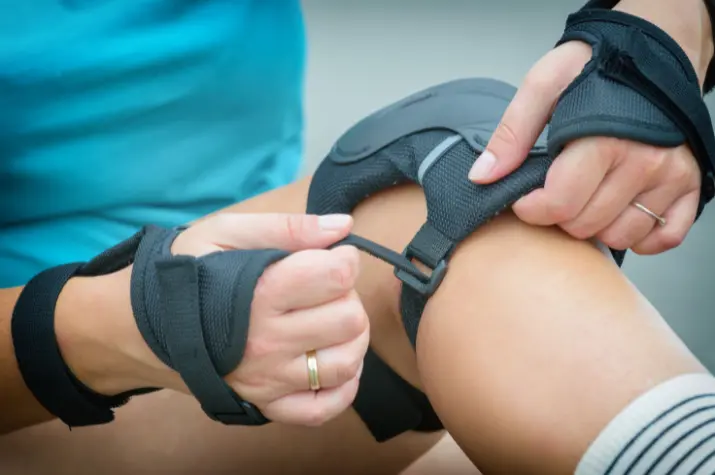
Joints are essential for enabling mobility and maintaining the body’s structural integrity. Strong and healthy joints are important for general mobility and well-being.
How to Keep Your Joints Strong
In this post, we’ll look at practical advice for how to keep your joints strong, so you may lead an active life and avoid joint problems.
Maintain a Healthy Weight:
Excess weight puts additional strain upon your joints, particularly the knees, hips, and lower back. This load can be lessened through keeping a healthy weight with a balanced diet and frequent exercise, protecting the integrity and function of the joints.
Aim for a diet low in processed meals and sugary snacks and high in vegetables, fruits, protein-packed foods, and whole grains.
Include exercise regularly in your regimen to help control your weight and build stronger muscles surrounding your joints.
Stay Active with Low-Impact Exercise:
Exercise regularly is essential to maintaining flexible and strong joints. Choose low-impact exercises that won’t overstress your joints, such as walking, cycling, yoga, and swimming.
These activities improve your heart health. By strengthening the surrounding muscles, increasing flexibility, and stabilizing the joints, these activities lower the chance of injury and promote general joint health.
To increase joint range of motion, warm up before working out and do some stretching exercises.
Prioritize Joint-Friendly Foods:
Joint health is greatly influenced by nutrition, and some foods can promote robust, healthy joints. Add foods high in omega-3 fatty acids to your diet, such as walnuts, flaxseeds, and oily fish (salmon, mackerel, and sardines), which have anti-inflammatory qualities and help relieve stiffness and soreness in your joints.
Include a lot of vegetables and fruits in your diet since they’re a great source of vitamins and antioxidants that can help with joint health and reduce inflammation.
To promote joint structure and integrity, you should also think about including collagen-rich foods like bones in broth, chicken skin, and hog skin. Finally, supplements like pure health joint support can also provide additional nutrients to support overall joint health and mobility.
Protect Your Joints During Physical Activity:

When participating in sports or physical activities, take precautions to keep your joints safe. Put on supportive, well-cushioned shoes that will help you absorb shock and lessen the pressure on your joints.
Wear safety equipment, such as elbow, knee, and wrist protectors, when engaging in activities that might cause falls or repetitive motions.
To prevent overstressing your joints, use appropriate body mechanics and techniques. You should also pay attention to your body’s cues to prevent injury or overexertion.
Incorporate Strength Training Exercises:
Exercises aimed at strengthening muscles are crucial for maintaining joint stability and gaining muscular growth. You should focus on exercises targeting the main muscle groups surrounding your joints, such as the shoulders, core, hips, and legs.
To build muscle and enhance joint function, try bodyweight exercises, resistance bands, or free weights. To keep pushing your muscles and enhancing joint strength and stability, gradually raise the duration and intensity of your strength training sessions.
Stay Hydrated:
Sustaining the health and functionality of joints requires enough hydration. Water cushions and lessens friction in the joints during movement by lubricating them. To keep hydrated, try to consume lots of water during the day, especially before, during, and after physical activity.
Reduce the amount of sugary and caffeinated drinks you consume since they can worsen joint stiffness and soreness and lead to dehydration. If you find it difficult to drink enough water, consider flavoring it with fresh fruit or herbs.
Listen to Your Body and Rest When Needed:

Finally, please pay attention to your body’s demands and give it the rest it requires to heal. When engaging in physical exercise, take note of any indications of joint pain, rigidity, or discomfort and refrain from pushing through any pain.
To avoid joint pain and stiffness, take frequent rests when sitting or standing for extended periods. To relieve stress and tightness in your muscles and joints, try incorporating relaxation techniques like meditation, yoga, or deep breathing exercises.
Make getting enough sleep and relaxation a priority to aid with joint healing and general wellness.
Conclusion
You may maintain an active and healthful lifestyle by adhering to these helpful guidelines, which will help you retain strong and resilient joints. To promote optimal joint health and function, include a balanced diet, frequent exercise, and joint-friendly habits every day.
Always pay attention to your body’s signals, safeguard your joints when exercising, and get medical help if you have chronic pain in your joints or discomfort. You may benefit from healthy and strong joints for many years to come with the right maintenance.
About The Author:
Anne Kamwila is a freelance content writer and a digital marketer. She is passionate about writing about health, technology, and business-related guides, news, and books.




